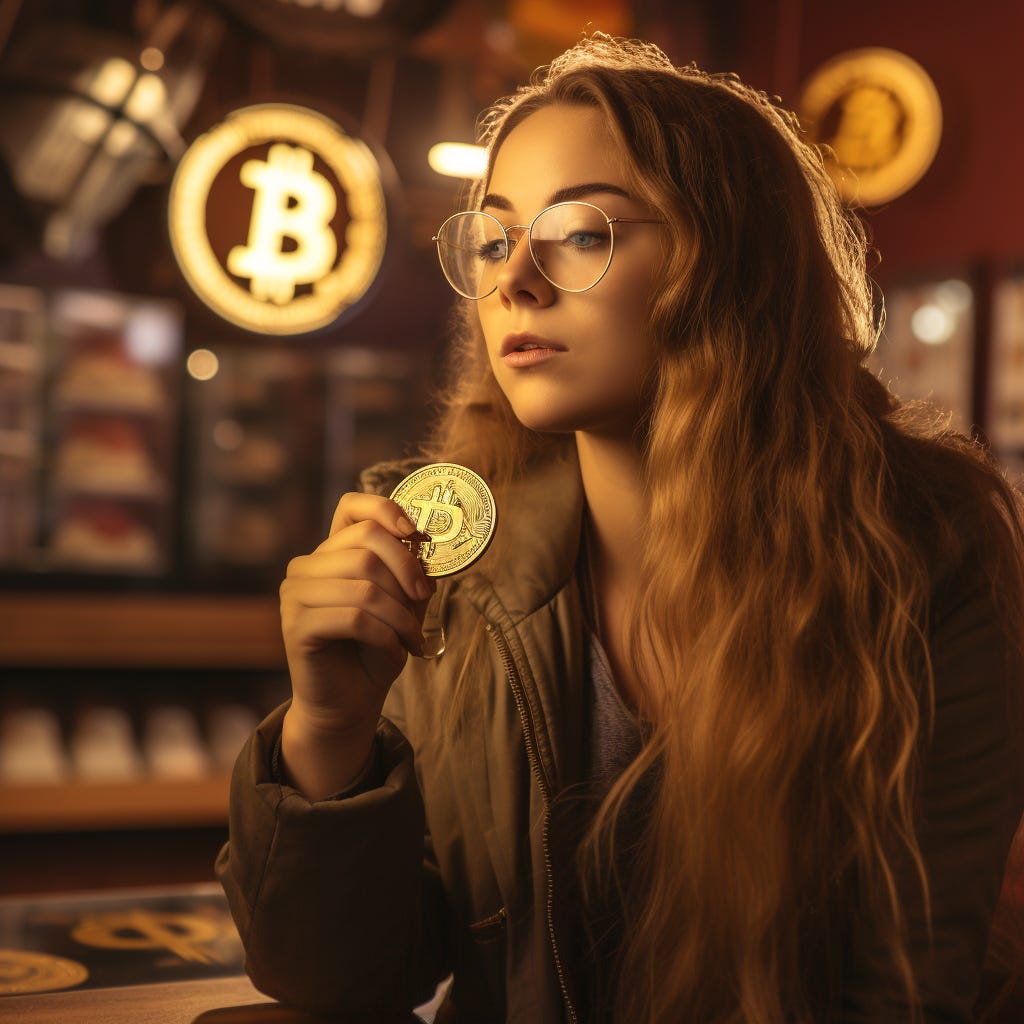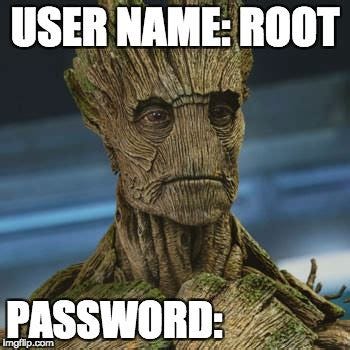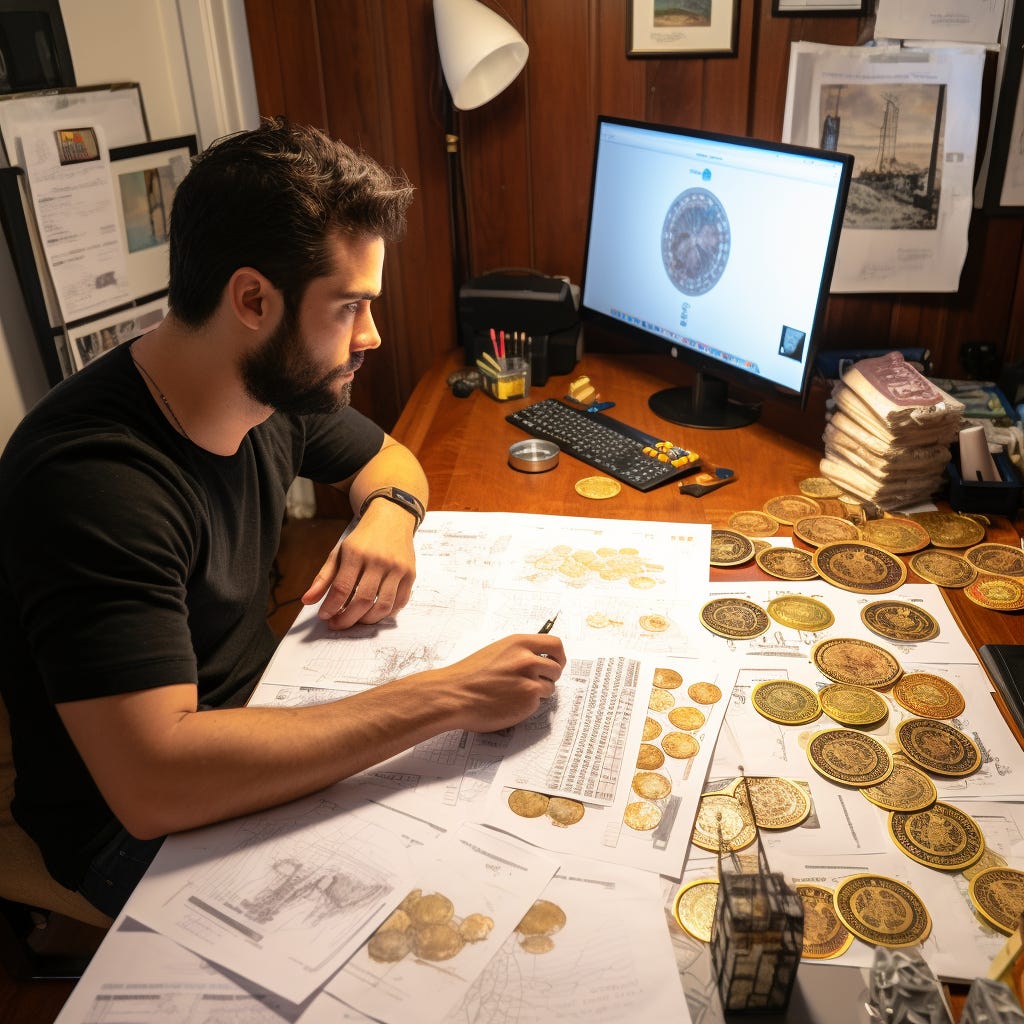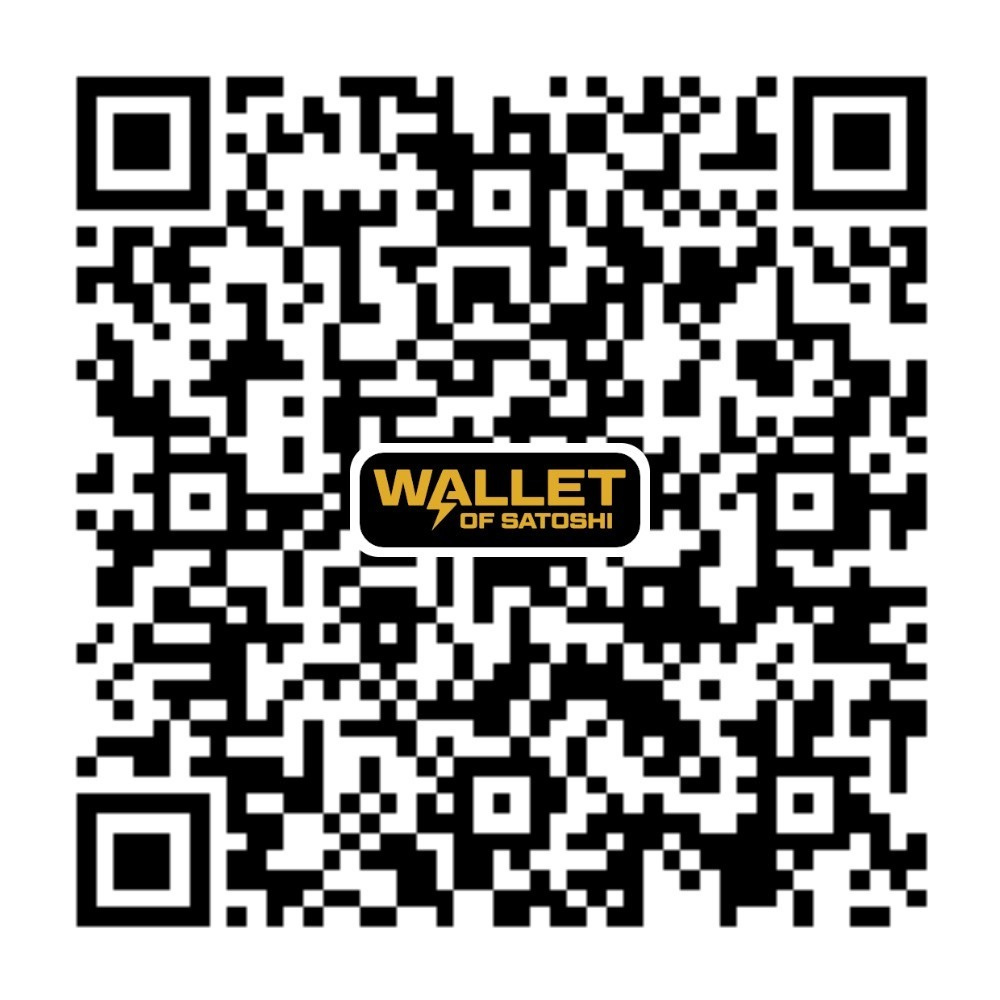Introduction
Bitcoin, often hailed as the future of money, is a revolutionary digital bearer asset and a decentralized network that has captured the imagination of individuals seeking financial freedom and autonomy. For those new to Bitcoin, this essay will provide a comprehensive introduction to this groundbreaking technology, covering its fundamental principles, how it works, and how to get started. I'll emphasize the importance of self-education and self-custody, two pillars of the Bitcoin philosophy.
What is Bitcoin?
Bitcoin is a multifaceted concept encompassing both a digital bearer asset and a decentralized network. Let's break down these components:
Bitcoin, the Digital Bearer Asset: At its core, Bitcoin is a digital form of money, similar to cash in the digital realm. It allows users to hold, transfer, and store value securely without the need for intermediaries like banks. Unlike traditional fiat currencies, Bitcoin is decentralized, meaning it is not controlled by any central authority, such as a government or a central bank.
Bitcoin, the Network: Bitcoin's network is a decentralized peer-to-peer system that enables the creation and transfer of digital assets (Bitcoins) without relying on a central server or authority. This network is maintained by a global community of participants, making it resilient and censorship-resistant.
Who is Satoshi Nakamoto?
The true identity of Satoshi Nakamoto remains a mystery, as the pseudonymous creator(s) of Bitcoin introduced this groundbreaking technology in 2008 through a whitepaper titled "Bitcoin: A Peer-to-Peer Electronic Cash System." Satoshi's anonymity was a deliberate choice to ensure Bitcoin's decentralization and avoid undue influence on its development.
Why Bitcoin is an Amazing Financial Innovation
Bitcoin's appeal lies in its unique features, making it a remarkable financial innovation:
Absolute Scarcity: Bitcoin has a capped supply of 21 million coins, making it the world's first truly scarce digital asset. This scarcity ensures that it cannot be inflated or devalued by central authorities, unlike fiat currencies.
Immutable Ledger: Bitcoin's blockchain is a public ledger that records all transactions, making it immutable. Once a transaction is added, it cannot be altered or deleted, ensuring transparency and trust.
Low Transaction Costs: Transferring large amounts of value through the Bitcoin network is cost-effective compared to traditional financial systems. This is especially important for cross-border transactions.
Security: Bitcoin's blockchain employs robust cryptographic techniques, making it extremely secure. The decentralized nature of the network also reduces the risk of single points of failure.
Accessibility: Bitcoin is accessible to anyone with an internet-connected device, making it inclusive and open to people worldwide.
How the Bitcoin Network Works
Understanding the Bitcoin network involves grasping the roles of three key components:
Nodes: Nodes are computers that maintain the Bitcoin network by validating and relaying transactions. Full nodes store a complete copy of the blockchain and ensure the network's integrity. It takes time to download the entire blockchain, but if you have an old computer it’s pretty easy to run a node.
Miners: Miners validate transactions by solving complex mathematical puzzles, adding new blocks to the blockchain, and earning rewards in the form of newly created Bitcoins and transaction fees.
Exchanges: Exchanges are online platforms that facilitate the buying, selling, and trading of Bitcoin. They act as intermediaries between buyers and sellers, offering various features and services.
How to Acquire Bitcoin
Acquiring Bitcoin can be done in several ways:
Exchanges: Sign up with a reputable exchange, complete the verification process, and purchase Bitcoin with fiat currency. I prefer to buy from Bitcoin-only exchanges such as Strike, Unchained, Swan or River.
Peer-to-Peer (P2P): Use P2P platforms like LocalBitcoins or Bisq to buy Bitcoin directly from other individuals. I have used Bisq myself and it’s pretty easy, best if you want to buy in smaller amounts. Of course, the best way to get peer-to-peer Bitcoin is to provide services or goods in exchange for Bitcoin. This is also highly private (also know as non-KYC).
Mining: Advanced users can mine Bitcoin using specialized hardware, but this requires technical knowledge and significant investment.
Self-Custody of Bitcoin
Self-custody is a fundamental principle of Bitcoin, emphasizing that you are responsible for your Bitcoin holdings. Here's how to achieve self-custody:
Hardware Wallets: Purchase a hardware wallet like Coldcard, Trezor, or Ledger to securely store your Bitcoins offline. This ensures protection against online threats. Make sure you buy direct from the manufacturer and check that the package is factory sealed when you receive it.
Seed Phrase: Safeguard your wallet's seed phrase, a 12 to 24-word mnemonic code. This phrase is your backup and can recover your Bitcoins if your wallet is lost or damaged.
Cold Storage: Store your hardware wallet and seed phrase in a safe and secure location, away from potential threats.
Operational Security and Lightning Network
Maintaining good operational security (OPSEC) is vital to safeguard your Bitcoin holdings. Key practices include:
Keep Your Seed Secret: Never share your seed phrase with anyone, and store it offline in a secure location.
Use Multi-Signature Wallets: Consider using multi-signature wallets for added security, requiring multiple keys to authorize transactions.
Lightning Network: For fast and inexpensive transactions without having to expose your main Bitcoin savings wallet regularly to send transactions, explore using Lightning Network wallets like BlueWallet or Zap, which operate on top of the Bitcoin network.
For more on Bitcoin Security, check out my past post here:
Bitcoin Security
·Happy New Year! I hope your new year is happy, healthy and prosperous. Inspirational tweet for this week’s post (a Bitcoin Core developer, someone you would consider an “expert,” lost his Bitcoin and asked the FBI for help; then Bitcoin Twitter freaked out about it):
Trade-Offs in Lightning Wallets vs. On-Chain Storage
While Lightning Network wallets offer speed and lower fees, they come with trade-offs in terms of security. Funds stored in Lightning channels are slightly more susceptible to certain risks, such as channel closures. It's essential to assess your needs and preferences when choosing between on-chain and Lightning Network storage.
Conclusion
Getting started in Bitcoin can be an exciting and rewarding journey towards financial sovereignty. Remember to educate yourself thoroughly before you make your first purchase, prioritize self-custody, and embrace good OPSEC practices. Bitcoin is not just a digital currency; it represents a paradigm shift in finance and individual empowerment. To deepen your understanding, read a few books like "The Bitcoin Standard" by Saifdean Ammous, "The Price of Tomorrow" by Jeff Booth, "The Book of Satoshi" by Phil Champagne, or Lyn Alden’s new book “Broken Money.” In fact, it’s best to read at least one or two of these books before you buy any Bitcoin. Welcome to the world of Bitcoin, where financial freedom begins with knowledge and self-responsibility.
Not financial or legal advice, for entertainment only, do your own homework. I hope you find this post useful as you chart your personal financial course and Build a Bitcoin Fortress in 2023.
Thanks for following my work. Always remember: freedom, health and positivity!
Please also check out my Building a Financial Fortress Podcast on YouTube here and on all your favorite streaming platforms. I do a weekly Bitcoin news update every week on current items of interest to the Bitcoin community, usually 30 to 60 minutes depending on the number of topics to cover. Please check it out if you haven’t already. Also now on Fountain, where you can earn Bitcoin just for listening to your favorite podcasts.
Follow me on Nostr:
npub122fpu8lwu2eu2zfmrymcfed9tfgeray5quj78jm6zavj78phnqdsu3v4h5
If you’re looking for more great Bitcoin signal, check out friend of the show Pleb Underground here.
Lightning tips appreciated:










Thanks! 🙏🏻
Great guide for beginners indeed.